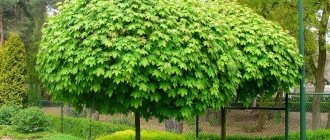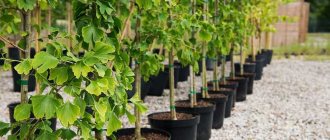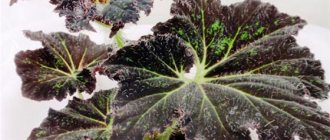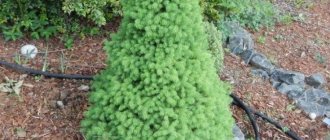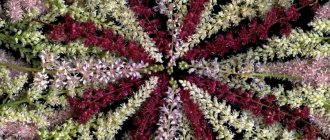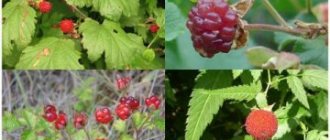Description
What types of trees are there? Deciduous trees differ from other species in the shape of their crown, the presence of fruits and the color of their leaves. Plants can be:
- small-leaved;
- broad-leaved.
According to another classification, trees are divided into:
- evergreen - change their leaves gradually and this is not related to the seasons;
- deciduous - they shed their leaves by winter. In spring, buds appear on them, from which new leaves subsequently form.
The trees described have a clear tissue structure and have different methods of pollination. Now they are the main landscapers in almost all countries. Such trees can perfectly adapt to changing weather conditions.
The wood of deciduous trees is light and durable to process, so it is often used for industrial purposes. Some beneficial substances from trees are widely used in medicine. Many of them feed humanity with fruits and berries. Some simply decorate landscapes.
Lifespan of trees
Names and descriptions of foliage plants:
Common oak is a species of the Oak genus from the Beech family, which reaches a height of 30-40 m and occupies a large area. The tree itself is large, broad-leaved, with numerous branches and a thick trunk (about 3 m in diameter). The crown is tent-like, asymmetrical, dark green with a brown tint. The bark is closer to black in color and thick. The leaves are oblong, heart-shaped, large, uneven.
Deciduous plants
Deep cracks appear when the tree reaches 20-30 years. A forest perennial plant lives for about 300-400 years, and at about 100 years it stops growing in size.
For your information! The oldest common oak is recorded in Lithuania, which, according to various estimates, is from 700 to 2000 years old.
Distributed in Western Europe, western Russia, as well as in northern Africa and western Asia.
White acacia (Robinia false acacia) is a species of the genus Robinia from the Legume family. Usually the tree reaches 20-25 m, but there are also 30-35 m. Acacia is wide with an openwork crown and a solid trunk with a diameter of 1 m, sometimes more. The leaves are small, light green, round, imparipinnate, about 10-25 cm. The bark is brownish in color, not very dark, with deep longitudinal cracks.
Important! White acacia does not belong to the Acacia genus. It cannot be called that because of its botanical features.
Lives up to 100 years. However, after the 40th year it begins to develop more slowly and is already considered old. In France, in Paris, the oldest Robinia grows, which is already more than 400 years old. It still blooms, although it is supported by two concrete, stable trunks. Homeland - eastern North America. Now grown as an ornamental plant on all continents, in temperate climates.
Palm maple (fan maple) is a species of the genus Maple from the Salindaceae family. The height is from 6 to 10 m, sometimes 16 m, so it does not take up much space. Has several strong trunks. The bark is dark brown with a greenish tint and small cracks. Leaves with 5, 7 or 9 lobes measure 4-12 cm. The color ranges from green-pink to burgundy. The crown is tent-shaped. It may look different depending on age.
Age can be up to 100 years. The oldest copy is in the USA (New York), which is about 114 years old. Its homeland is Japan, Korea and China, but it also takes root in other territories.
White birch is a name applied to two species of the Birch genus, the Birch family: downy birch and silver birch, reaching from 25 to 30 m in height and up to 1 m in trunk diameter. Both species are classic trees of the Middle Zone, the leaves of which are about 7 cm in length, small, bright green, ovate. The bark is brownish and begins to turn white by the age of 10 years.
Important! The fluffy bark is smooth, white, without cracks, while the pendulous bark is the opposite.
It grows in Europe, Russia, for example, many are planted in the Moscow region. Most often, the two species grow together, which is why such a single name came about. Lifespan is about 120 years, although sometimes longer is found.
Norway maple (sycamore, plane-leaved) is a species of the genus Maple from the Salindaceae family. Reaches from 12 to 28 m in height. The leaves are palm-shaped with 5 or 7 lobes up to 18 cm in size. Maple is a deciduous tree, so its color varies from light green to orange depending on the season. The brownish bark is smooth and may darken over time.
In good conditions it can live up to 200 years, although it does not increase any further at 50-60 years. One of the oldest sycamore maples grows in Ukraine, Kyiv. Habitat: Europe, western Asia.
Pavia horse chestnut is a species of the horse chestnut genus from the Salindaceae family. A small tree up to 12 m high. The trunk is small, slender, covered with light, grayish bark. The crown is wide, lush with reddish branches. Leaves are up to 14 cm long with a serrated edge and visible veins of a bright green color. Consist of five narrowly elliptical lobes.
Under favorable conditions, it lives from 200 to 300 years, although most often it is limited to 150 years. In Southern Europe, India, Asia, people like to plant it in the country or near the house as an ornamental plant; in its natural environment it can be found in North America.
Winged euonymus is a species of the genus Euonymus from the Euonymus family. A small shrub up to 3 m tall with a densely branched crown. The trunk is slender with numerous branches. The bark is brownish and has unusual corky wings along the edges. The leaves are obovate up to 5 cm green, but in autumn they can be carmine red.
Lives up to 50-60 years. During this time, the roots and trunk become stronger, growth stops after 25-30 years. Distributed in Japan, Manchuria and Central China.
Note! Can be indoor.
European beech is a species of the genus Beech from the Beech family. The tree reaches 50 m in height, has a slender, columnar trunk up to 2 m in diameter. The crown is wide, rounded. The bark is not very dark, grayish, smooth, but there may be small scales. The leaves are spherical, pointed at both the base and apex, up to 10 cm long. The color varies from dark green in spring to brown in autumn.
According to various sources, the age of beech can be up to 500 years or up to 300 years. However, there is a specimen that is about 930 years old. It is most commonly planted in Europe, but has also been introduced to North America.
Apple tree is a species of the Rosaceae family, Plum subfamily. There are 62 species on the list. The most popular: homemade, Chinese and low. Small-leaved trees range in height from 2.5 to 15 m. The bark is dark brown with small cracks; wild species may have thorns. The leaves are pubescent below with falling or remaining stipules. The flowers are collected in few-flowered corymbose inflorescences. The fruit is an apple, formed from the lower ovary.
Note! The apple tree is quite durable for a domesticated crop. Age reaches 100 years. However, wild varieties can grow for up to 300 years.
The apple tree is widespread in Europe, Iran, Crimea, China, Mongolia, and Russia.
Linden is a member of the Malvaceae family, which has about 45 species. The most popular: small-leaved, large-leaved, felt, American, etc. Height varies from 20 to 38 m. The crown is tent-shaped. The leaves are heart-shaped with a more or less pronounced serrated edge and have stipules. The bark is dark gray, there are few cracks. Often it is sheet material.
Linden is a perennial tree, living up to 500 years. Some species grow longer: up to 800 and 1000 years (heart-shaped linden). Most often found in the subtropical zones of Europe, Asia and North America.
Common ash is a species of the genus Ash from the Olive family, which reaches 20-30 m in height, trunk diameter 1 m. The crown is openwork, wide. The bark is light brown, grayish with small cracks. The leaves are imparipinnate, which can contain from 7 to 15 leaflets. The leaves are ovate, elongated, sessile.
The long-living tree reaches 400 years. Homeland - Europe, Transcaucasia and Iran.
Common ash
Trembling poplar (aspen) is a species of the Poplar genus from the Willow family. Reaches 35 m in height and 1 m in diameter. The bark is light, grayish, cracks and darkens over time. The leaves are rhombic up to 7 cm, pointed at the top. The crown is wide and spreading.
Most trees live up to 80 years, although there are trees up to 150 years old. Distributed in Europe, Asia, East Africa, North America.
Hornbeam is a genus of the Birch family, which has 41 species. The bark is gray and cracks little. The leaves are oval up to 10 cm with parallel pinnate veins, dark green with a sharp tip. The trunk is slender and beautiful.
Age ranges from 100 to 150 years, although it occurs up to 400 years. The genus is represented in Asia, especially in China, as well as in Europe.
Ash is a genus of the Olive family. Reaches 25-35 m, some up to 60 m in height. The trunk diameter is up to 1 m. The crown is highly raised, wide-rounded. The bark is dark gray, smooth, with small cracks in the lower part. Leaves are opposite, up to 40 cm, consisting of 7-15 leaflets. The latter are dark green with a wedge-shaped whole base, naked above.
Ash can live up to 400 years. Found in Europe, Russia, Asia.
Difference between deciduous and coniferous trees
Deciduous plants differ from conifers not only in leaf structure and reproduction characteristics. There are coniferous trees whose leaves do not resemble needle-shaped needles, and some of them (for example, larch) are not evergreen, so determining the type of plant is not always easy.
Main differences:
- There are many classes of deciduous plants, while conifers are grouped into one class. Previously, yews were classified into the second group, but now scientists have abandoned this division.
- Conifers are much older and do not have a flowering stage. They are always either male or female.
- Deciduous trees adapt more easily to different climatic conditions and are able to grow in the harshest and driest regions.
Despite the existing differences, both types are able to exist next to each other, so they are often combined when designing a site. Popular ornamental coniferous plants are cypress, cedar, thuja, and juniper.
Southern tree varieties
Southern trees are characterized by good resistance to drought and heavy rainfall. These plants grow in regions with hot climates. The list of trees includes poplar, apricot tree, cypress, sumac. They grow in plant nurseries or in summer cottages and suburban areas.
Cypress
Green rose - varietal variety, what are there
Cypress is a type of evergreen, fast-growing species. Cypress is a perennial tree that grows up to 25 m. The plant can take the form of a bush up to 2 m long. The main growth of cypress occurs in the first years of its life. Then it increases by several centimeters every year. The lifespan of cypress is up to 2000 years. Its trunk can be straight or slightly curved, the bark is smooth, and over time acquires a furrowed structure. The leaves of the plant are scaly.
Important! Cypress is difficult to care for, so it needs to be fertilized periodically and given preventative vaccinations.
Acacia
White acacia is a plant that belongs to the Legume genus and grows in the south. Acacia can be shrubby or woody. The height of the tree is up to 30 m, the width of the trunk is up to 2 m. Acacia has a wide crown that spreads over several meters. The leaves of the tree are long, up to 25 cm, imparipinnate. The fruits of the plant are beans, up to 6 cm long. Each of them contains about 8 seeds. Their ripening begins in mid-late September.
Poplar pyramidal
Pyramid poplar belongs to the Willow family. Its length varies within 40 m, and the width of the trunk reaches 1 m. Poplar has a pyramidal crown, its flowering begins in late April and early March. Average life expectancy is 300 years. Poplar has smooth gray bark and a well-developed root system. Because of this, poplar growth occurs quite quickly. The leaves of the plant are distinguished by a diamond-shaped shape, and its flowers are combined into long catkins.
Ash
Ash is a deciduous tree. Its height can reach 40 m. The shape of the crown is rounded, the branches of the tree are directed upward.
Lone ash tree with a spherical crown
The trunk has a cylindrical shape. Ash leaves form an inflorescence of 10-15 small green leaves. The fruits of the plant, lionfish, grow up to 5 cm. At first they have a green tint, then turn brown. Flowering begins in spring, after a long winter sleep.
Important! Ash is unpretentious to growing conditions, so it can exist even in swampy areas.
Sumac
Staghorn sumac has another name - vinegar tree. This is a plant that belongs to the Sumakhov subspecies. For the first time, the plant, according to the tree encyclopedia, appeared in North America. Sumac is similar in appearance to a palm tree. Its crown is spreading, umbrella-shaped, the leaves are dissected. The trunk has a brown tint. The leaves are distinguished by their red color.
Important! The inflorescences of the tree are purple in color and resemble chestnut in appearance.
Russia is a beautiful country with diverse vegetation. In its expanses you can find coniferous and deciduous trees. Each of them has its own characteristics, size and life expectancy. Many plants are used in folk medicine together with various herbs and cosmetology for the treatment of female and male pathologies. The names of all trees in alphabetical order can be seen in special reference books, where their detailed characteristics are described.
Fruit
Among fruit plants there are both deciduous trees and shrubs and evergreens. There are hundreds of varieties of fruit plants in the world.
Apple, plum and cherry trees are traditionally grown in Russian regions, but some other trees are also frost-resistant and take root well in the middle zone.
Plum, cherry, bird cherry, sweet cherry
These plants are distinguished by beautiful flowering and white or white-pink flowers.
Bird cherry
They prefer sunny and open places. In spring they bring sophistication and freshness to the garden, and their fruits are widely used in cooking.
Cherries
Irga
This plant tolerates the harsh winters of Siberia well and does not require troublesome care. Serviceberry berries contain a high content of vitamin C, acids, and tannins.
To obtain a rich harvest, shadberry is planted in an open, sunny place, maintaining a distance between bushes of at least 3 m.
Apricot
Apricot belongs to the Rosaceae family. All types and subspecies of apricot are deciduous leafy plants.
The plant blooms with beautiful white or pink flowers. The serrated leaves have a glossy finish. The fruits are orange or yellow. The rich color of the fruit indicates the presence of beta-carotene, which is a powerful antioxidant that prevents aging.
Wild apricots have small, dark orange fruits. Wild apricot varieties are found most often in China and Ukraine. These include: Maniazhur apricot, common apricot, Tibetan apricot, ansu, Siberian apricot. The following fruit varieties can be distinguished: Sambursky early, Zaporozhets, Monastyrsky, Molodezhny.
The common apricot can withstand temperatures up to 45 degrees below zero. It tolerates drought well, but cannot withstand waterlogged soil.
Hazel
Hazel is also known as hazel. An unpretentious, sun-loving shrub that bears fruit in late summer or early autumn. Common hazel nuts are called hazelnuts.
They have high nutritional value, contain valuable oils and are rich in microelements. To increase the yield, replanting is carried out every two years.
Hawthorn
Deciduous bush, less often a low tree. Hawthorn is often grown for decorative purposes, but its fruits are widely used in medicine.
They regulate heart function, help fight shortness of breath and are useful for thyroid diseases.
Peach
Growing peaches is quite painstaking, and the lifespan of this plant is short. They are not suitable for the Moscow region and all central regions.
Peach grows in warm latitudes, producing flowers early in the year - in January or February. The flowering of the tree begins before the first leaves bloom.
Honeysuckle
There are more than 200 species of honeysuckle in the world. In the wild, it grows in Asian regions. These plants are trees and shrubs.
Garden honeysuckle is often used for decorative purposes.
Elder
The most common type is black elderberry, but Marginata and Aurea varieties are more suitable for garden plots.
Elderberry is planted in a sunny place or in light partial shade and propagated by cuttings.
Plum (damson, cherry plum)
These fruit bushes look very impressive during flowering and do not tend to get sick during wet, rainy periods.
Fruit trees, like plums, are also moisture-loving deciduous trees
You can even plant plums next to a swamp and in large quantities, so the area will drain more quickly. Trees consume moisture to form strong branches, dense leaves and fruits.
Important! For planting, it is recommended to plant the plum or cherry plum not in the shade, but in the area most exposed to the sun, so the drying process will be most effective.
You cannot plant any trees on a garden plot if it has swampy areas. Deciduous plants can serve as good dehumidifiers and decorate garden areas if you study their characteristics and properties.
Apple tree
The height of apple trees may vary depending on the variety. In Russia, most often, medium-sized trees with red and white-pink fruits are grown. These deciduous plants bloom profusely from April or May to June and like well-lit areas.
Difference between deciduous and coniferous trees
Deciduous plants differ from conifers not only in leaf structure and reproduction characteristics. There are coniferous trees whose leaves do not resemble needle-shaped needles, and some of them (for example, larch) are not evergreen, so determining the type of plant is not always easy.
Despite the existing differences, both types are able to exist next to each other, so they are often combined when designing a site. Popular ornamental coniferous plants are cypress, cedar, thuja, and juniper.
Deciduous trees of Russia
Deciduous trees - types and life expectancy
Deciduous forest trees include linden, birch, oak, and elm. Such vegetation is found in mixed forests throughout Russia.
Linden
Linden belongs to the deciduous group of plants.
Big linden tree in the middle of a field
Geographically, it grows in the European part of the country. The height indicators reach 40 m. The crown of the linden tree has a spherical shape; its diameter can increase up to 20 m. This gives the tree majesty. The leaves are arranged on long petioles in an alternate order. The leaf blade has a jagged structure and a yellow tint. Linden blossoms begin in early July and last up to two weeks.
Note! Linden fruits, flowers, leaves and bark are widely used in folk medicine and cosmetology. Healing decoctions and infusions are prepared on their basis.
Oak
Oak belongs to the Beech subspecies. It grows in the Eastern European part of Russia. The plant is impressive in size. Its length reaches 60 m, and the width of the trunk remains at around 2 m. The oak has a spherical crown, making it majestic and wide. The bark of the tree has a gray tint, and as it develops it turns black. Average life expectancy is 500 years.
Oak is distinguished by its taproot system, its leaves have different rounded edges and alternate arrangement.
Important! The tree begins to bloom in the 40th year of life at the end of spring. Oak fruits - acorns - appear in early to mid-September.
Elm
Elms are deciduous trees, growing wild, reaching a height of 30-40 m. At the same time, the width of the trunk increases to 2 m as it grows. Sometimes elms are found in the form of shrubs. The crown of the plant most often has a cylindrical shape, but sometimes it is also spherical. Elm lives up to 120 years. In history, cases of his life expectancy of up to 400 years have been recorded.
Birch
Birch grows in the northern and central latitudes of the country. This plant is suitable for growing in summer cottages. Birch grows up to 40 m in height and lives up to 150 years. The leaf shape of the plant is round with jagged edges. Inflorescences in the form of flattened earrings. Birch is not picky about growing conditions, so you can use sand, clay, and stones for planting it.
Lonely birch tree in the center of a green field
Note! In spring and summer, the plant produces juice, which is widely used in folk medicine. Based on the leaves and buds of birch, various decoctions and infusions are made that help cope with many diseases. The wood of the plant is used to make plywood and wooden toys.
Aspen
Aspen
Acacia
Acacia blossom
Acacia is an evergreen tree. The genus of acacia includes more than 400 species. The tree cannot withstand cold climates, so it is found more often only in tropical and subtropical climates.
Acacias can be either short or tall. Some plants reach 25 m in height. Acacias are distinguished by shedding their leaves during drought.
White acacia does the opposite. During drought, its leaves bloom, and with the onset of humidity, they fly off. Acacia is a good honey plant. After 30 years, the plant noticeably slows down its growth, and its bark begins to crack.
The most famous in our country are silver acacia and white acacia. The latter species is popularly called mimosa. White locust grows in South Africa and is an evergreen plant.
Maple
Maple is considered a small deciduous tree with an ovoid crown. Widely distributed in Europe, in deciduous forests. Over the course of a year, the plant grows by 25-45 cm, and the height of an adult maple is from 5 to 15 m. The leaf has an opposite, 3-5 lobed shape. In autumn, the dark green color on the leaves changes to a bright orange, sometimes red hue.
The plant is unpretentious to its growing areas. It can easily tolerate dry and wet soils and calcareous substrates. Tolerates heat, frost and wind well.
Common species include: field maple, ash maple, Norway maple or common maple, false sycamore maple, red maple, silver maple, Tatarian maple, sugar maple.
Alder
Alder
Hornbeam
Hornbeam grows in European and West Asian forests. The crown of the tree can be either cone-shaped or spherical. The soft-leaved plant has a stable immunity to diseases, therefore it is one of the strongest deciduous trees.
Willow
There are about 300 species of willow in nature. All of them can be classified as deciduous dioecious plants. Willow is valued as a honey plant, and also for improving landscape design. Life expectancy is up to 200 years. The plant blooms in April, yellow narrow catkins appear along with the leaves.
Willow is frost-resistant. It is not demanding on soil and moisture and can survive drought. The root system is superficial and widespread. Willow prefers sunny places, but light shade is not an obstacle to it.
Most often the plant can be found along the banks of rivers and seas. Trees line huge thickets along rivers and lakes.
The plant's neighbors are often poplars and aspens.
The most famous species in nature are: white or silver willow, golden willow, and weeping willow.
Poplar
Poplars are quite unpretentious to soils. They tolerate the conditions of the middle zone, but they can also be found in the north.
Pyramid poplars
The only thing poplars don't like is wetlands. Trees can live up to 150 years, but because they are susceptible to fungal diseases, poplars do not live long.
The crown shape can be either pyramidal or wide spreading. Poplar fruits are peculiar capsules that, with the onset of heat, release seeds with fine hairs. This fluff, if it gets into the eyes and respiratory tract, can cause an allergic reaction.
Among the most common types are: white or silver poplar, balsam poplar, black poplar, trembling poplar or trembling aspen.
Poplar wood is used to make paper, silk, matchsticks and furniture. When landscaping an area with poplars, you need to take into account that with age they become brittle. Their roots are very powerful and aggressive and can harm the water supply under the road surface.
Chestnut
Chestnut is considered a large tree up to 25-30 m in height. Its crown is wide, dense, and very picturesque. An adult tree has branches that hang down. In nature, it can be found in mountain forests; it prefers deep sandy and clay soils.
Every year the tree's growth increases by 45 - 50 cm. The leaves are large and consist of 5-7 parts. The leaf blade and petiole are 10-20 cm long.
Chestnut fruit
The color is dark green, and in autumn it changes to yellow-brown. Chestnut has large pyramidal inflorescences, similar to candles, directed upward. The fruits are interesting: large green balls with spines, inside which seeds ripen - chestnuts.
The root system is deep, taprooted, with a large number of branches. Common names: common chestnut, pink horse chestnut, small-flowered horse chestnut.
Deciduous trees also include: beech, elm, alder, hazel, linden.
Ash
Ash has one of the strongest woods, which is why in ancient times it was used to make weapons. Now its wooden part is used to make furniture, musical instruments, and the bark with fruits is used in pharmaceuticals. Ash can grow up to 50 meters, so it has a very strong and wide root system. Its bright green leaves form an ovoid shape, with some varieties having jagged edges.
Beech, or European beech
The tree is 40 meters high, sometimes it can grow up to 55 meters, but the diameter does not exceed 2 meters. One of the longest-living plants with an oval crown.
Forest beech also has another name - European
The wide leaves have a round, slightly elongated shape. The bark of a young beech is brownish-gray, while that of an adult is dark gray with scales on it.
What trees grow in the forest
What trees grow in coniferous and mixed forests is a question that worries many. In Russian coniferous forests, which occupy up to 70% of the country's area, low temperatures and high humidity are observed. Therefore, the main representatives here are spruce, pine, and larch. In the broad-leaved forests that stretch from the western part of the country to the Ural Mountains, oak, maple, and linden grow. In the mixed forests of Russia you can find all types of trees: poplar, pine, spruce, linden, oak, elm shrub.
Tree with a spreading crown in the park
For your information! Trees in mixed forests are considered long-lived.
Types of trees
All trees are divided into coniferous and deciduous. Different representatives of conifers have the following characteristics:
- are considered evergreen, grow in central Russia in moderately humid areas;
- most often found in the northern regions of the country;
- have one trunk from which side branches extend;
- have leaves that look like needles;
- The fruits of coniferous plants are cones, in which subsequent seeds are formed.
Important! Coniferous species are considered the longest-living in the world, their average values reach 500 years.
The height level varies at around 50 m. Deciduous trees in the Moscow region and other environs of Russia, by evolutionary standards, formed later than conifers. Deciduous trees can be found in mixed forests. The following types of trees are classified:
- small-leaved;
- broadleaf;
- evergreen;
- deciduous.
Such plants have a shorter lifespan, on average up to 200 years. Their sizes vary within 35 m.
Evergreen deciduous plants
Coniferous or evergreen deciduous trees are also used in the design of homestead areas. Today there are many varieties of trees and shrubs that are capable of decorating a site with their fresh and bright crown throughout the year.
Euonymus winged
An impressive foliage plant that can also be grown as a houseplant. It has an unusual openwork crown with small leaf plates. The plant can be grown as a shrub, as it tends to grow very wide.
Rhododendron
More than 600 species of rhododendron grow in the world, some of which are deciduous, and some are evergreen. One of the most popular genera is azalea.
Azaleas are heat-loving, require careful care, they need acidic soil and regular fertilizers.
Magnolia
An ancient plant that appeared in the Cretaceous period. Natural habitat is East Asia and North America.
Wild magnolia grows on the Russian island of Kunashir. In the southern regions it is used for urban landscaping and planted in private areas.
Boxwood
A slow-growing, unpretentious plant that in Russia grows mainly on the Black Sea coast.
One of the most ancient shrubs used for landscaping. Since boxwood easily tolerates pruning, it is well suited for creating hedges and sculptural compositions.
Features of cultivation
Some crops grow at an accelerated pace, while others have to wait for several years to grow. There is a large separate group of deciduous crops, the trees of which are distinguished by their unusual crown shape and color. The shape of the crown in this case can be spherical, pyramidal, spicate and openwork.
The group of ornamental crops includes deciduous trees that can be grown in different conditions. Some plants feel comfortable when grown in dry places, while others require more fertile and fresh soil for their comfortable and normal growth.
In general, deciduous crops do not grow well in dry places, when roads are salinized in winter, as well as in poor environmental conditions, which in some cases simply kills the plants. Nowadays, an increasing number of crops that are more resistant to growing conditions are emerging , which are well suited for planting in city parks.
Moisture-loving trees for draining the site
Some areas of the soil may be too swampy and wet, causing other plants to not develop properly. The solution is to plant moisture-loving trees and shrubs.
What kind of trees are there in the middle zone - deciduous and coniferous trees
Alder is a genus of the Birch family, of which there are about 40 species. The leaves are spherical with a blunt end and pronounced veins. The bark is dark brown with small cracks. The crown is set high and wide. The life form changes depending on the conditions. Since alder loves moisture, it can often be seen near swamps. There it is represented by trees up to 30 m. In drier areas it looks like a small tree, sometimes a shrub.
For your information! Wood is popular for use in the construction of frames, furniture, lining of classrooms, schools, and kindergartens.
Larch is a genus of the Pine family. With good humidity it can grow up to 50 m and live up to 300-400 years (there are specimens that have lived up to 800 years). The needles are soft, the crown is loose. The trunks are slender, the bark is brown with small cracks. Grows in the taiga, temperate regions of Eurasia and North America. Often found in coniferous forests.
Tatarian maple is a species of the genus Maple, family Salindae. Native to Europe and Southwest Asia, it grows along ravines and rivers. Depending on the amount of water, it can be up to 12 m tall with thin, smooth, dark bark and simple, opposite, oval leaves up to 11 cm long.
Important! Due to pollution of water bodies, the number of specimens is decreasing.
Homemade plum
Ash, birch and plum fruit trees are also moisture-loving.
In life, a person must plant a tree, build a house and raise a child. The article provided useful data to deal with the first point by choosing a tree that will fit well with the owner’s site.
Which fruit trees love moisture?
Among the moisture-loving shrubs and trees there are also fruit plants. They are planted in garden plots that are swampy and require soil drainage. In this way, you can “kill two birds with one stone” at the same time: bring the site to normal condition and grow fruit trees.
Coniferous trees and their needles
By looking at the shape of the needles, you can easily determine what type of tree they belong to. Here are the main conifer species:
1. Larch . Bunches of 12-20 short needles. They fall in the autumn.
2. Fir . Single needles with blunt tips.
3. Cedar and juniper . Small flat scaly leaves.
4. Pine . Two or three needles connected at the base.
5. Spruce . Sharp, hard tetrahedral needles.
6. Tise . Flat leathery needles.
Interesting facts about deciduous trees
The trees described appeared during the Jurassic period. Despite their young age, their distribution area has expanded to the entire planet in a fairly short period of time. It's interesting that:
- The largest tree is considered to be a chestnut tree called “Hundreds of Horses”. Grows on the east coast of Sicily. It is only 8 km away from the active crater of Mount Etna. The tree is included in the Guinness Book of Records because it has the largest trunk girth - 57.9 km. The chestnut tree has one root, but several trunks. As legend has it, one day the Queen of Naples and her 100 knights took refuge under this tree during a thunderstorm. Since then, the chestnut has received the name “Hundred Horses”;
- In the south of Primorye you can find Schmidt birch. This plant is interesting because it has durable, fire-resistant wood that sinks in water;
- The oldest tree in Europe can be considered the “Old Man” oak, it is already 2000 years old. Poland also has its own long-livers: three “Oaks of Friendship”, which are 900 years old. They have their own names: “Czech”, “Lech” and “Rus”.
Deciduous forest develops much faster than coniferous forest. The forest is lighter and more spacious because the trees do not grow too close to each other.
There are some more interesting facts about deciduous trees with a variety of names. These plants are capable of developing throughout their lives, and although they are often called the lungs of the planet, on average 20 grams of wood is used to make a piece of ordinary paper.
This is why it is so important to support recycling, because 75-80 kg of waste paper can save one large tree. The most expensive type of wood is mahogany. The height of the tallest specimen in the world is 115 m; this crop grows in the USA.
But the richest country in timber is Finland. Forests make up about 70% of its area. By comparison, the area of forest planted in Greater Britain is estimated to be around 12-13%. About 25% of all forests on our planet are Taiga. Overall, forests occupy about a third of the land area. But this number is decreasing every year. Being in the forest is really good for your health. Many people report that they can relax in nature. This is physiologically true, because next to the abundance of trees, the pulse slows down slightly and breathing becomes more even.
While watching the video, you will learn which deciduous trees can be planted on the site.
The most valuable deciduous trees are those with the following names: pear, oak, ash, cherry, beech, walnut and maple. They are used both in construction and for industrial purposes.
Man and forest
The impact of human activities on forests around the world is enormous. Forests are an important part of the economy of many countries - producers of wood, paper, building materials and furniture. Human intervention in forest ecosystems threatens their destruction. Particularly serious problems arise when plantations of other fast-growing trees are planted in place of cleared forests: they disturb the habitat, displace its inhabitants and dramatically change the landscape. Plantations are important sources of timber, but they can cause damage to forest ecosystems. Very little has survived from the vast deciduous forests of antiquity to the present day. This is explained by the spread of agriculture and the rapid growth of cities. Destructive human activities such as acid rain threaten the last remnants of forests. We must remember this danger and take all measures to protect forests.
Where are coniferous forests?
The main habitat of coniferous forests is the vast taiga zone with a cold climate. More than half of the world's heritage of coniferous forests grows in Russia's Taiga. These zones extend mainly in the north, in the European part of the country, the territory of Western and Eastern Siberia, as well as in the Far East.
Interesting materials:
When is the Prepatch wow? When are lines in different planes parallel? When was the border invented? When were flash drives invented? When were manta rays invented? When was boiled sausage invented? When do receipts for electricity arrive? When do payments for kindergarten arrive? When to take Suprastin before or after meals? When did Pashinyan come to power?

